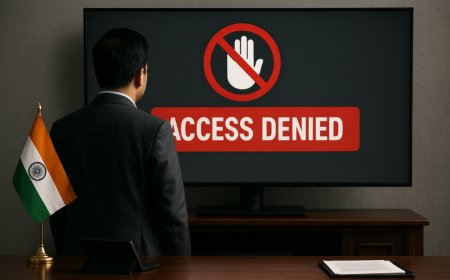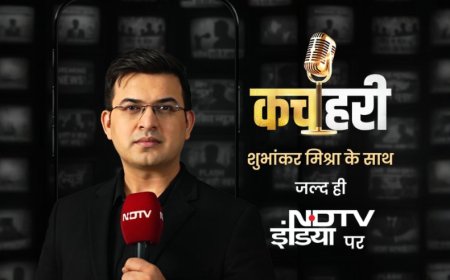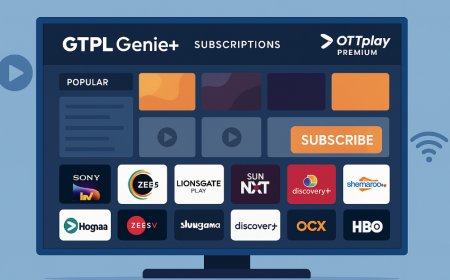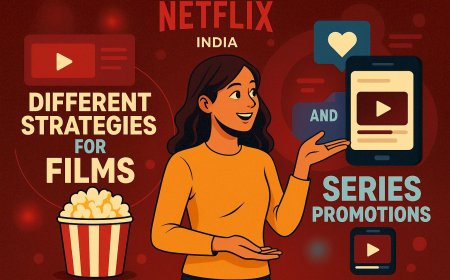India Bans 25 OTT Platforms Over Obscene Content: A Wake-Up Call for Digital Streaming Regulations
India bans 25 OTT platforms over obscene content, citing violations of IT rules and cultural sensitivity. Explore the impact on digital streaming, creative freedom, and regulatory compliance in India’s booming entertainment industry.

In a major move that has ignited debate across the entertainment, legal, and digital landscapes, the Indian government has ordered a ban on 25 Over-The-Top (OTT) platforms, citing the broadcast of obscene, vulgar, and morally inappropriate content. This unprecedented step marks one of the strictest crackdowns on digital streaming services in India’s recent history and has brought to light serious questions about censorship, creative freedom, and the evolving definition of public decency in the digital age.
With internet access now nearly universal across India, OTT platforms have emerged as major players in the entertainment industry. But this ban serves as a reminder that with freedom comes responsibility — and when that balance is disrupted, consequences follow.
Let’s explore what this ban means, the reasons cited by the government, reactions from the public and industry, and the broader implications for India’s digital content ecosystem.
What Are OTT Platforms and Why They Matter
OTT platforms — which include streaming services like Netflix, Amazon Prime Video, Disney+ Hotstar, and several local players — deliver video content directly to consumers over the internet, bypassing traditional cable or satellite channels. In recent years, the popularity of OTT platforms has skyrocketed in India due to affordable data, diverse content libraries, and a younger audience hungry for new forms of storytelling.
While big players operate with global infrastructure and legal checks, hundreds of smaller OTT platforms have also mushroomed across the country. These platforms often focus on niche genres — ranging from regional language dramas and adult thrillers to horror, erotica, and experimental cinema.
The 25 platforms banned by the government largely fall into this latter category — smaller, lesser-known apps or websites that were distributing content deemed “obscene” or “sexually explicit” without proper age-gating, disclaimers, or regulatory oversight.
The Government’s Justification for the Ban
The Ministry of Information and Broadcasting (I&B), which oversees the regulation of digital media and content in India, issued the ban following multiple complaints from citizens, parents’ associations, and social groups. These complaints alleged that the platforms in question:
-
Were streaming content that was sexually explicit or pornographic in nature
-
Lacked appropriate age verification systems or parental control features
-
Violated existing IT rules and content guidelines issued in 2021
-
Operated without transparency, proper disclaimers, or accountability mechanisms
-
Promoted themes considered offensive to Indian cultural and moral standards
The government emphasized that the content on these platforms went “beyond permissible limits of creative expression,” especially in public domains where minors could gain access without restrictions.
In its statement, the Ministry declared, “This move is to safeguard the dignity of our citizens, uphold cultural sensibilities, and ensure digital platforms are not misused as tools to spread obscenity under the guise of entertainment.”
A Reminder of the IT Rules, 2021
The ban also brings back focus on the Information Technology (Intermediary Guidelines and Digital Media Ethics Code) Rules, 2021 — a comprehensive regulatory framework introduced to govern digital media, including OTT platforms.
Under these rules:
-
OTT platforms must classify content by age (U, U/A 13+, U/A 16+, A)
-
They must provide parental controls and content disclaimers
-
They are required to establish grievance redressal mechanisms
-
A three-tier regulatory structure was introduced involving self-regulation, an industry body, and government oversight
While large players have generally complied with these norms, many smaller platforms have operated in a gray area — lacking even basic viewer safeguards or adherence to classification norms.
The current ban, then, is seen by many as a wake-up call to all OTT providers — regardless of size — that regulatory compliance is no longer optional.
Public and Industry Reactions: A Divided House
As expected, the decision has sparked divided opinions across social and professional circles.
Public Support: Protecting Children & Cultural Values
Many citizens, especially parents, have welcomed the ban. With teenagers having easy access to smartphones and streaming platforms, concerns over exposure to explicit or disturbing content are real. Some believe the government has acted in the interest of families and public morality.
Online forums and social media are filled with voices supporting the decision, stating that content freedom should not be an excuse to normalize vulgarity or glorify unethical behavior.
Industry Pushback: Concerns About Censorship and Creativity
On the other hand, content creators, filmmakers, and digital rights advocates have expressed concern. While they agree that platforms must operate responsibly, they fear that banning platforms outright may set a troubling precedent that could stifle artistic freedom and innovation.
Some argue that what's considered “obscene” is highly subjective, and India — a country with diverse cultures and tastes — cannot define content by a single moral lens. Others caution that blanket bans risk encouraging self-censorship, where creators stop taking narrative risks for fear of political or cultural backlash.
What This Means for Smaller OTT Players
The most immediate impact of the ban will be felt by the independent and regional streaming platforms. Many of these platforms had carved out niches in adult content, horror, or experimental cinema with low budgets and minimal compliance.
Post-ban, such platforms may struggle to:
-
Regain audience trust
-
Attract advertisers or payment gateways
-
Survive without investing in legal compliance infrastructure
Experts suggest that moving forward, robust content policies, legal teams, and transparency will no longer be luxuries but survival tools for any OTT brand in India.
Could This Be the Start of a Stricter OTT Policy Era?
The OTT space in India has long operated under minimal interference — a fact that enabled creativity to flourish. But with increasing internet penetration and diverse demographics now accessing digital content, there is a visible shift toward stricter enforcement of content norms.
This ban could signal:
-
More proactive monitoring of content hosted on OTT platforms
-
Increased collaboration between ministries, cyber cells, and state bodies
-
Higher legal scrutiny on new or emerging platforms
-
Greater pressure on streaming services to invest in AI content moderation, user feedback loops, and community-based filters
While this may be seen as curbing freedom by some, the government maintains it is simply holding digital platforms to the same standards that apply to TV and cinema.
What the Future of Streaming in India Looks Like
India remains one of the world’s largest and fastest-growing video streaming markets. With over 500 million digital users, the potential for innovation in storytelling, regional content, and entertainment is limitless.
However, the next phase of growth will depend heavily on striking the right balance between:
-
Creative freedom and content responsibility
-
User demand and cultural context
-
Market opportunity and regulatory accountability
Global OTT giants, local startups, and content creators will all need to revisit their strategies. Compliance teams will become as essential as content writers. Viewer safety will be as important as engagement metrics.
For viewers, too, this is a chance to reflect on what we expect from digital platforms. Is every story worth telling? Should every platform have access to your 14-year-old? Is accountability a restriction — or a requirement?
Final Thoughts: A Defining Moment for Digital India
The ban on 25 OTT platforms over obscene content may appear on the surface to be a censorship story — but it's much more than that. It's a defining moment in India’s digital entertainment journey, where quality, compliance, and ethics must now coexist with creativity.
What's Your Reaction?
 Like
0
Like
0
 Dislike
0
Dislike
0
 Love
0
Love
0
 Funny
0
Funny
0
 Angry
0
Angry
0
 Sad
0
Sad
0
 Wow
0
Wow
0












































